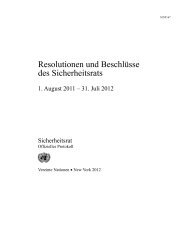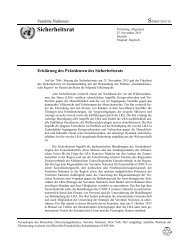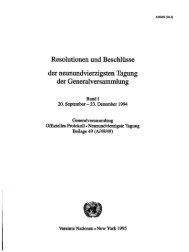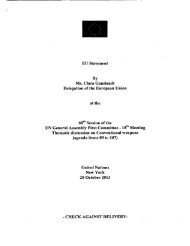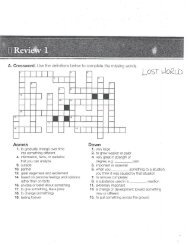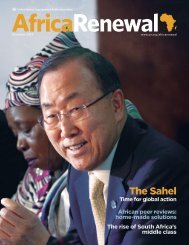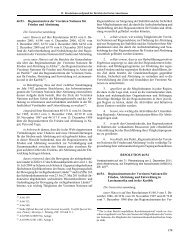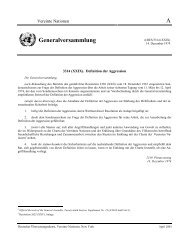SRI LANKA COUNTRY PROFILE
SRI LANKA COUNTRY PROFILE
SRI LANKA COUNTRY PROFILE
You also want an ePaper? Increase the reach of your titles
YUMPU automatically turns print PDFs into web optimized ePapers that Google loves.
38<br />
CP2002-<strong>SRI</strong> <strong>LANKA</strong> PAGE 38 Of 106<br />
CHAPTER 14: PROMOTING SUSTAINABLE AGRICULTURE AND RURAL DEVELOPMENT<br />
Decision-Making: Decision making pertaining to Agenda 21 commitments in agriculture takes place at several<br />
levels. However, the ministries and departments carried the major responsibility for decision making by being<br />
responsible for carrying out policy reviews on aspects such as determination of food security goals and sustainable<br />
development strategies at the national level and incorporating them into national action programmes. Community<br />
organizations and NGOs assisted this review process. Governmental departments also carried a major responsibility<br />
at the implementation level, as agricultural extension programmes implemented by the state sector became the<br />
major vehicle for carrying these thrusts to individual farmers and other action agents. The Ministry of Agriculture is<br />
the key decision making body.<br />
Programmes and Projects: Important projects and programmes are summarized below.<br />
Programme Area Action<br />
1. Agriculture policy review, planning and integrated The National Policy Framework for Agriculture,<br />
programmes in the light of multifunctional aspect of Lands and Forestry–1995<br />
agriculture, particularly with regard to food security Recommendations of the National Development<br />
and sustainable development<br />
Council – Agriculture Policy–1996<br />
National Programme Document on Food Security –<br />
(Follow up to WFS, 1996)–1997 and update 2000<br />
2. Ensuring peoples participation and promoting human -<br />
resource development for sustainable agriculture<br />
3. Improving farm production and farming systems -<br />
through diversification of farm and non-farm<br />
employment and infrastructure development<br />
4. Land-resource planning, information and education National Physical Planning Strategy–2001;<br />
for agriculture<br />
National Land Use Policy prepared by the Land Use<br />
Policy Planning Division–2002.<br />
5. Land conservation and rehabilitation Soil Conservation (Amendment) Act – 1996<br />
Upper Watershed Management Project - 1996-2003<br />
Environmental Action 1–Pilot Land Management<br />
Component (PLMC) – 1996-2002<br />
6. Water for sustainable food production and rural National Water Resources Development Policy –<br />
development<br />
1998.<br />
7. Conservation and sustainable utilization of plant Under the Plant Genetic Resources Centre of the<br />
genetic resources for food and sustainable agriculture DOA – est. in the 1980s continues accessions and<br />
in-situ and in-vitro conservation<br />
8. Conservation and sustainable utilization of animal -<br />
genetic resources for sustainable agriculture<br />
9. Integrated pest management for sustainable<br />
National IPM Programme initially funded by FAO<br />
agriculture<br />
and continued by the DOA<br />
10. Sustainable plant nutrition to increase food production Integrated Plant Nutrition Management Programme<br />
implemented by the National Fertilizer Secretariat<br />
Integrated land development or 'Saraboomi'<br />
Programme of the Ministry of Agriculture – 2000<br />
11. Rural energy transition to enhance productivity -<br />
12. Evaluation of the effects of ultraviolet radiation on -<br />
plants and animals caused by the depletion of the<br />
stratospheric ozone layer



